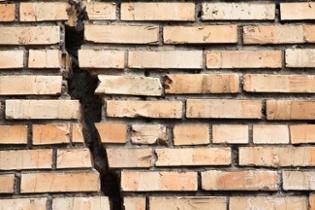3 Signs you have foundation Issues

Three signs you have foundation issues
Foundation issues can be caused by a variety of factors, but the end result is the same. If you suspect that your home may have foundation issues, then there is no time to lose. The longer you wait to treat these issues, the more severe the damage can become.
Foundations are generally made up of concrete and steel – but as time passes, nature and the elements start to sink into the concrete and settling starts to occur. A good contractor will take your home’s climate into consideration when building it, but damage can still be caused due to lack of preparation, extreme weather conditions, or bad soil. When there is weak soil or the levels of moisture in the soil change, then the soil’s ability to handle your home’s weight may also change, leaving you with an insecure foundation. Luckily, there are a couple of ways to tell if your home is showing signs of foundation issues:
Look Out for Cracks
Over time, it’s typical for your paint to start to chip and you may see cracks in the drywall – but if you start to notice these cracks all over your home, the foundation may be moving. Specifically, you want to keep an eye out of angular cracks that may indicate settlement or sinking. A jagged, angular crack is a sign that your foundation is greatly shifting unevenly downward.
Look Out for Water
Crawl spaces are often left alone for years at a time, and they start to accumulate water from heavy rains or leaks that you never thought to check for. If standing water is left in a crawl space it will start to cause erosion of concrete structures, it will attract termites, and it is susceptible to mold and mildew, all of which aid in the crumbling of your foundation.
If you notice that your crawl space or basement is suddenly damp, you must determine why this is the case. You may have to invest in a sump pump or new ventilation for the space, but your peace of mind is worth it to know that the corners of your house will be stronger.
Sloping or Uneven Floors
In addition to being a sign of foundation issues, sagging floors immediately cause potential danger as it is now much easier for you to trip and fall in your own home. If your floors used to be level but are now sagging and squeaking, it could be a sign that the ground underneath has settled or sunk unevenly.
Changes in the level of moisture below your home or weak soil may lead to your foundation not being able to bear the weight of the structure. Because these changes will often happen unevenly, you may see the same result with your floors. If you suspect sloping but can’t see clear evidence, take a marble and roll it along your floor. If it keeps going in the same direction, it’s time to have your foundation checked.
Click here for a free foundation consultation.